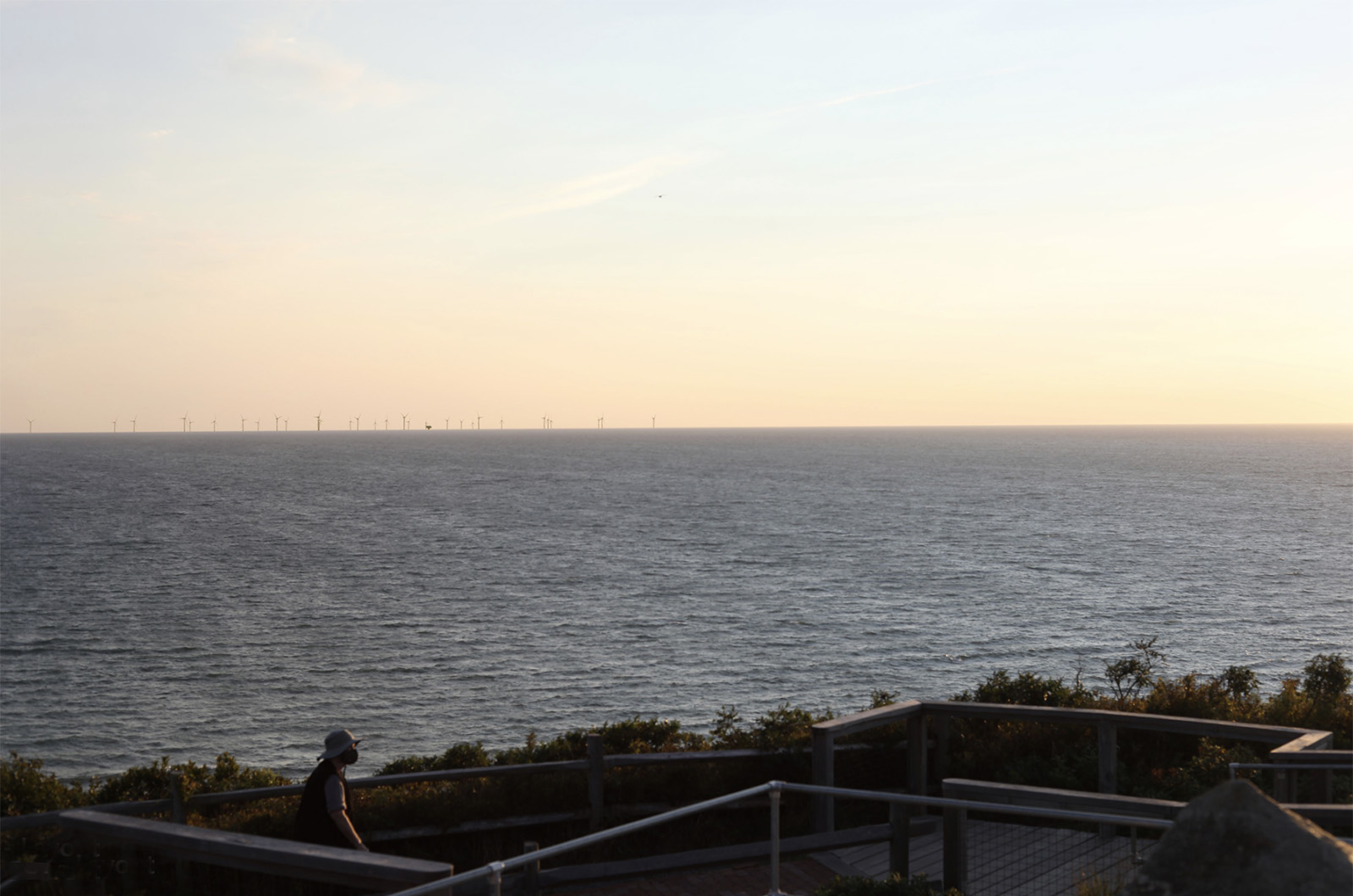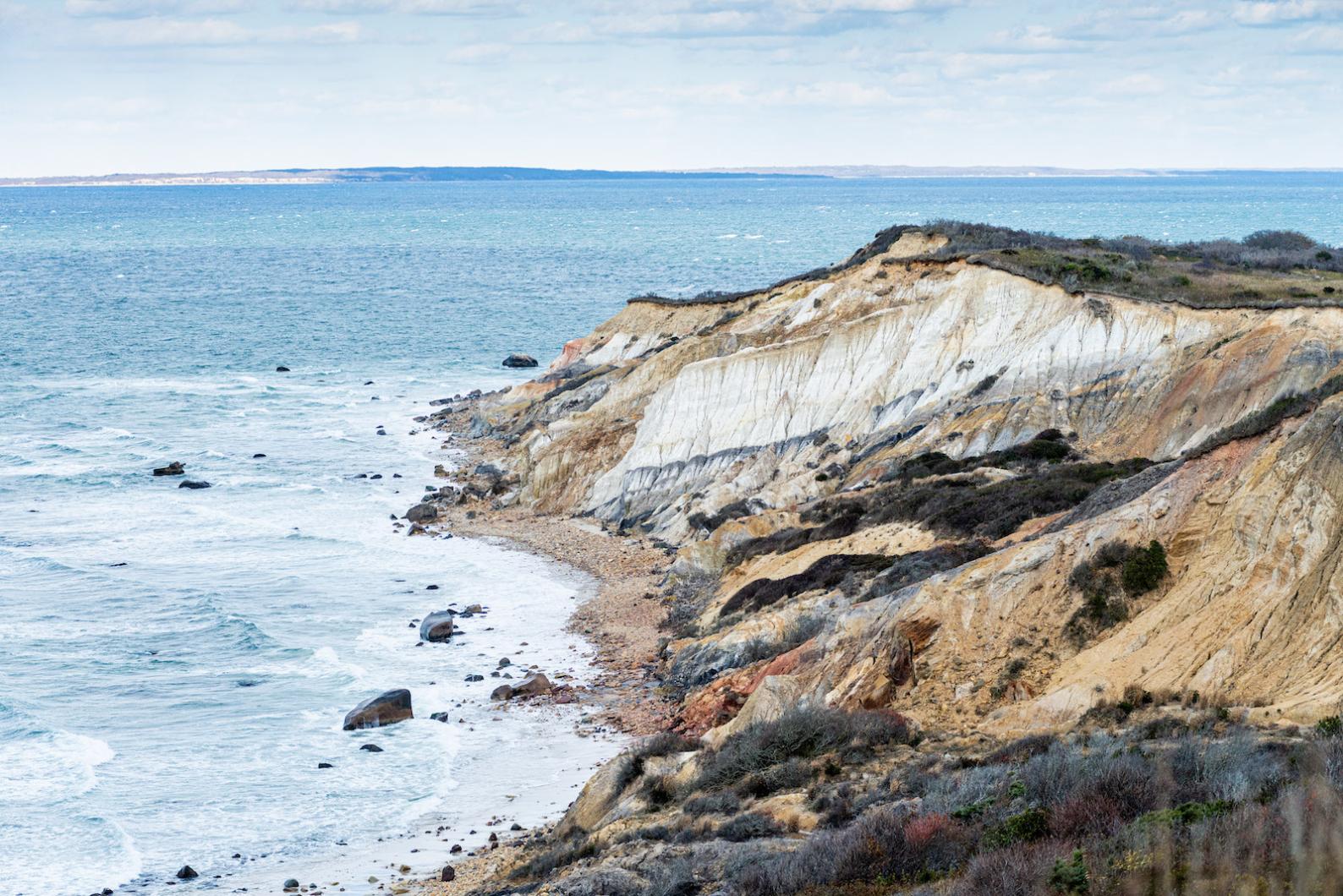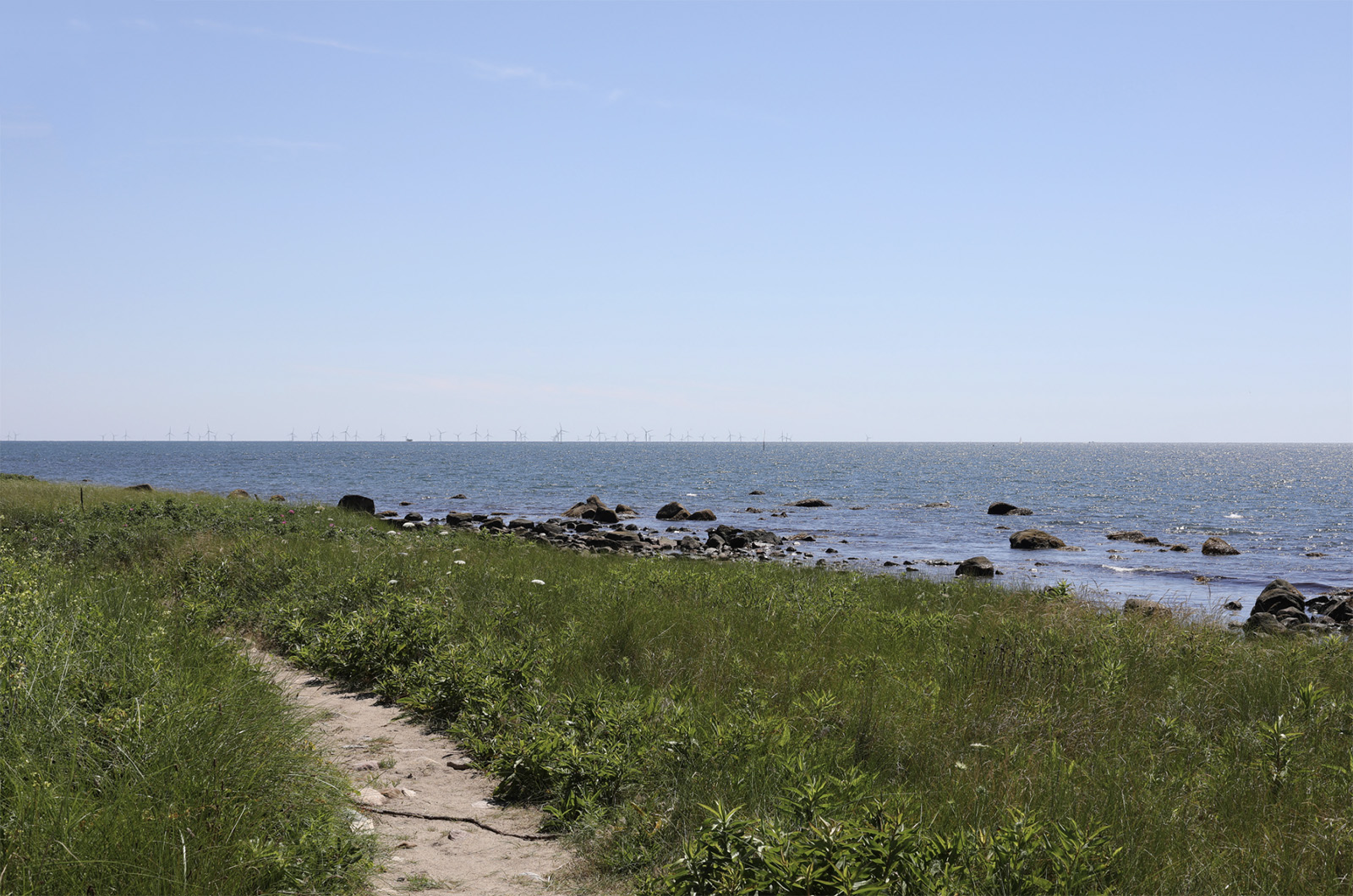An offshore wind energy developer says it will cut down on the number of turbines it is proposing to put in the waters off Martha’s Vineyard in order to reduce the number that can be seen from Aquinnah.
Revolution Wind, at the suggestion of the federal agency currently reviewing the project, will seek no more than 65 wind turbines about 14 miles off the western tip of the Island. The project is still facing backlash from Cheryl Andrews-Maltais, chairwoman of the Wampanoag Tribe of Gay Head (Aquinnah), who is calling for officials to slow down the permitting process.
Revolution Wind initially proposed erecting up to 100 wind turbines in an area southwest of Aquinnah to supply 700 megawatts of renewable wind power to Rhode Island and Connecticut. In a July environmental report on the project from the Bureau of Ocean Energy Management, the bureau found the project would impact Aquinnah’s scenic horizon and suggested potential changes.

In its preferred plan, BOEM recommended Revolution Wind install only 65 wind turbines, as well as potentially relocating some that would be close to the Island. As originally pitched by Revolution Wind, the closest turbine to Aquinnah was planned to be about 13 miles, but under BOEM’s preference turbines would be moved back to a minimum of 14.25 miles from the western side of the Island.
A Revolution Wind spokesperson said the company, owned by Orsted and the utility Eversource, is on board with the idea.
“Revolution Wind will follow BOEM’s recommendation for no more than 65 wind turbines for the project,” said Meaghan Wims.
Graphics of BOEM’s suggested alternatives show turbines would still be seen on the horizon, but there would be fewer of the 873-foot high structures.
The BOEM report is an essential step in the permitting process and it serves as an environmental backdrop for officials’ decision-making moving forward. If approved, the project would have roughly the same number of turbines as Vineyard Wind, which is under construction directly south of the Island.
Ms. Andrews-Maltais has been skeptical of Vineyard Wind, the first commercial scale offshore wind farm in the country, and she also worries about Revolution Wind standing in the direct sightline of Aquinnah.
“This new one, it’s really just disheartening,” Ms. Andrews-Maltais said. “They’re in your face.”
The proposed wind farm alterations from BOEM didn’t change the chairwoman’s sentiment, and she feared that tribal concerns would be trampled in an attempt to get the turbines erected as soon as possible. Ms. Andrews-Maltais continues to push for federal officials to place a moratorium on new wind projects, or at least take more time during permitting to better consider the environmental risk of putting hundreds of turbines off the Island’s coast.
Building hulking turbines in Aquinnah’s pristine view will be a big loss for the tribe, she said.
“They are stripping that from us, our children and our future generations,” Ms. Andrews-Maltais said.
Because the turbines will be visible from several culturally important sites on the Island, Aquinnah stands to gain hundreds of thousands of dollars in mitigation funds.
The town recently negotiated with Revolution Wind and another wind contractor, Sunrise Wind, to fund several improvements to the Gay Head Lighthouse and Aquinnah Circle. Both companies committed $825,000 total to lighthouse repairs, with Revolution Wind also committing $500,000 to improve the staircase at Aquinnah Circle and $50,000 to winterize the Vanderhoop Homestead.
Aside from visual impacts to the Island, BOEM found, the project could have major adverse impacts on fishing in New England and moderate impacts to marine mammals.
In July, the National Oceanic and Atmospheric Administration concluded that while the proposed project would adversely affect endangered whales, sea turtles and Atlantic sturgeon, it is not likely to jeopardize their continued existence or destroy any critical habitats.
In a statement to the Gazette, the CEO of Orsted’s Americas division thanked the Biden Administration for putting the country on a path to a future with clean energy.
“This major milestone keeps Revolution Wind on-track to complete environmental review and obtain approval by later this summer, with construction activities ramping up soon after,” said David Hardy.
The company hopes to have the project, one of several proposed for south of the Vineyard, fully operational by 2025.
Brooke Kushwaha contributed to this report.








Comments
Comment policy »